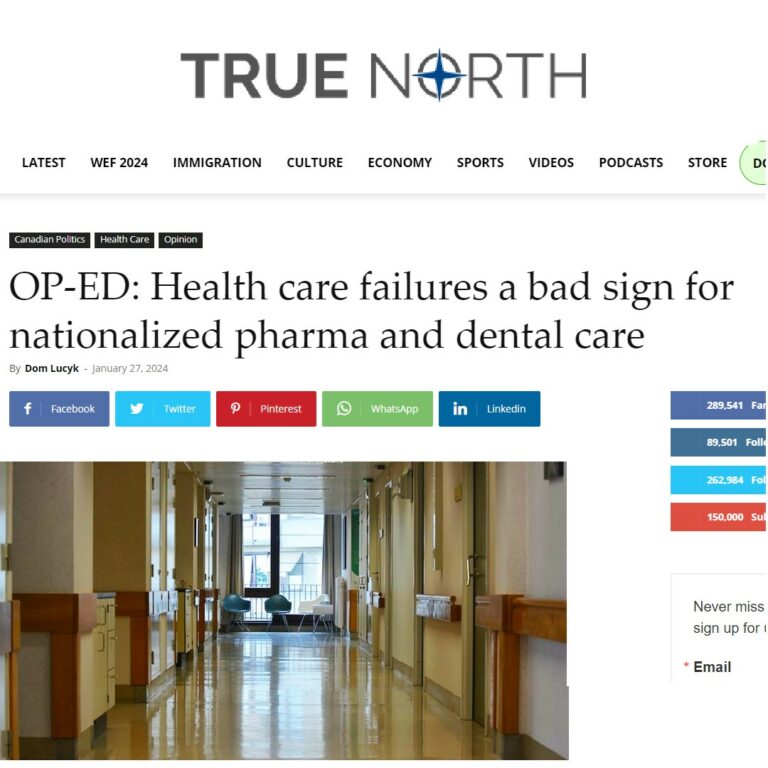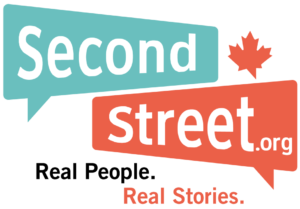TRUE NORTH COLUMN: Health care failures a bad sign for nationalized pharma and dental care

Doubling down on your failures can only lead to more problems. This is especially true of Canada’s broken health care system.
Imagine your friend runs a spaghetti restaurant. It’s never really managed to get the job done: customers wait far too long for their orders, people are getting the wrong dishes, and the portions are too small. The government sets up complicated regulations that effectively stop anyone else from selling spaghetti, giving this restaurant no reason to improve its services.
This friend mentions to you that they’ve been thinking of buying the ice cream shop across the street.
Would you tell them it’s a good idea to take on yet another responsibility? Common sense would suggest that they figure out how to run their business effectively before taking on new projects.
Despite government-run health care failing pretty much across the country, the federal government has created a national dental insurance program and some federal politicians continue to flirt with the idea of a national pharmacare program.
The Canadian health care system is run like that failing spaghetti restaurant. It’s basically a government monopoly – and it’s not working out. Tens of thousands are dying on waitlists each year. Wait times are longer than ever. About one in eight Canadians is waiting for surgery, a diagnostic scan, or to see a specialist.
Considering governments have struggled with health care delivery for decades, why do some think they should take on dental care and a national pharmaceutical care program?
The federal government is dead set on getting involved in dental care. It plans to launch a new government dental insurance plan this year. For now, thankfully, it doesn’t plan to ban private insurance. But that could easily change down the line – like we saw with health care.
More concerning is the push to nationalize pharmaceutical care. Many Canadians rely on life-saving drugs – heart medication, insulin for diabetics, etc. And they’re able to get this important medication quickly and efficiently in a privately-run setting. The federal Liberal-NDP coalition hasn’t yet worked out all of the details of their plan, but the NDP hopes to create a universal, single-payer system, just like we currently have for most aspects of health care. The Liberals haven’t yet committed to going that far.
Canadians are not convinced about this idea. A recent Leger poll showed that only 18% of Canadians think that creating a new, nationalized pharmacare plan is a top priority. About 44% supported a more reasonable plan to offer support to lower-income people who don’t have drug coverage through their employer.
If this plan winds up simply being a subsidy to pay for drugs for those who don’t have private coverage, this wouldn’t be too controversial. Most provinces already provide some kind of drug plan to help pay for prescriptions.
The real danger would be if governments copy the way they run health care and apply it to pharmaceuticals.
There are too many horror stories to count when it comes to government-run health care.
Judy Anderson, a retired Ontario nurse, described to SecondStreet.org how she lost her two adult daughters because of waitlists. They both died waiting for heart surgery that could have saved their lives. Allison Ducluzeau, a B.C. patient who was diagnosed with cancer, told media that the government gave up on her and refused to give her treatment, saying her chances of survival weren’t good enough. Instead, they offered her assisted suicide. Thankfully, she refused, and travelled to the U.S. for the life-saving care.
That’s just scratching the surface of the system’s failures.
What else might we see if the government monopolizes pharmaceuticals and dentistry? Could we see months-long waits for insulin, leaving diabetics without a reliable way to control their blood sugars? Will people with arthritis be forced to wait for medication that helps control their chronic pain? Will dental surgery wait times skyrocket?
If the way Canadian health care currently runs is any indication, the answer to those questions is likely ‘yes.’
Government support for people who can’t afford care is one thing. However, we’ve already seen the disastrous consequences of government-run health care. Doing the same to pharmaceuticals and dentistry would just open the floodgates for more inefficiency, more wait times, and more Canadians receiving terrible health services.
Instead of dreaming up new ways to cause trouble, the government needs to focus on the real issues at hand: fixing the current health care system, not by doubling down on a failing model, but by introducing real reform.
Dom Lucyk is the Communications Director with SecondStreet.org, a Canadian think tank.
This column was originally published in True North on January 27, 2024.
You can help us continue to research and tell stories about this issue by making a donation or sharing this content with your friends. Be sure to sign up for our updates too!


